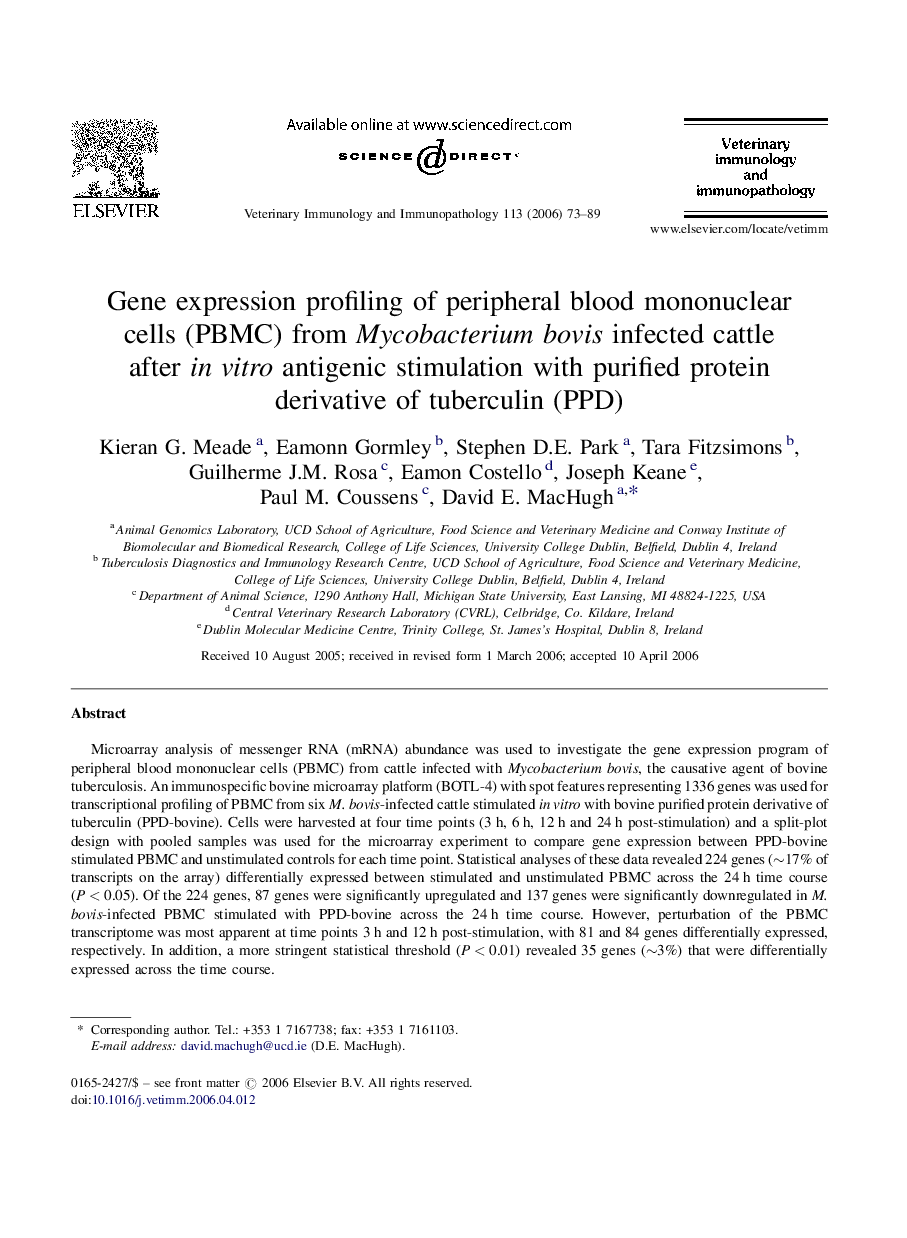| Article ID | Journal | Published Year | Pages | File Type |
|---|---|---|---|---|
| 2463376 | Veterinary Immunology and Immunopathology | 2006 | 17 Pages |
Microarray analysis of messenger RNA (mRNA) abundance was used to investigate the gene expression program of peripheral blood mononuclear cells (PBMC) from cattle infected with Mycobacterium bovis, the causative agent of bovine tuberculosis. An immunospecific bovine microarray platform (BOTL-4) with spot features representing 1336 genes was used for transcriptional profiling of PBMC from six M. bovis-infected cattle stimulated in vitro with bovine purified protein derivative of tuberculin (PPD-bovine). Cells were harvested at four time points (3 h, 6 h, 12 h and 24 h post-stimulation) and a split-plot design with pooled samples was used for the microarray experiment to compare gene expression between PPD-bovine stimulated PBMC and unstimulated controls for each time point. Statistical analyses of these data revealed 224 genes (∼17% of transcripts on the array) differentially expressed between stimulated and unstimulated PBMC across the 24 h time course (P < 0.05). Of the 224 genes, 87 genes were significantly upregulated and 137 genes were significantly downregulated in M. bovis-infected PBMC stimulated with PPD-bovine across the 24 h time course. However, perturbation of the PBMC transcriptome was most apparent at time points 3 h and 12 h post-stimulation, with 81 and 84 genes differentially expressed, respectively. In addition, a more stringent statistical threshold (P < 0.01) revealed 35 genes (∼3%) that were differentially expressed across the time course.Real-time quantitative reverse transcription PCR (qRT-PCR) of selected genes validated the microarray results and demonstrated a wide range of differentially expressed genes in PPD-bovine-, PPD-avian- and Concanavalin A (ConA) stimulated PBMC, including the interferon-γ gene (IFNG), which was upregulated in PBMC stimulated with PPD-bovine (40-fold), PPD-avian (10-fold) and ConA (8-fold) after in vitro culture for 12 h. The pattern of expression of these genes in PPD-bovine stimulated PBMC provides the first description of an M. bovis-specific signature of infection that may provide insights into the molecular basis of the host response to infection. Although the present study was carried out with mixed PBMC cell populations, it will guide future studies to dissect immune cell-specific gene expression patterns in response to M. bovis infection.
